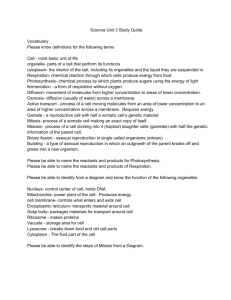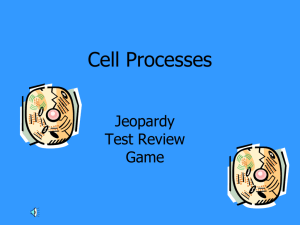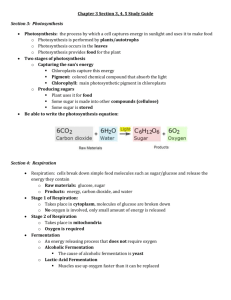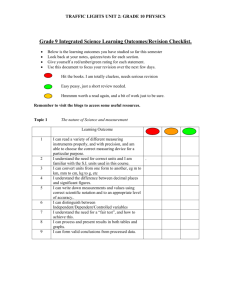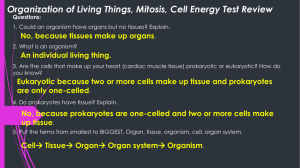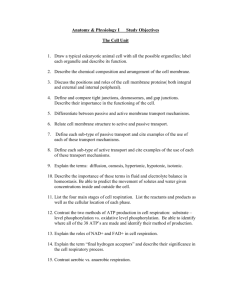Ch 2: Cell processes: Review guide: Use your textbook to answer
advertisement
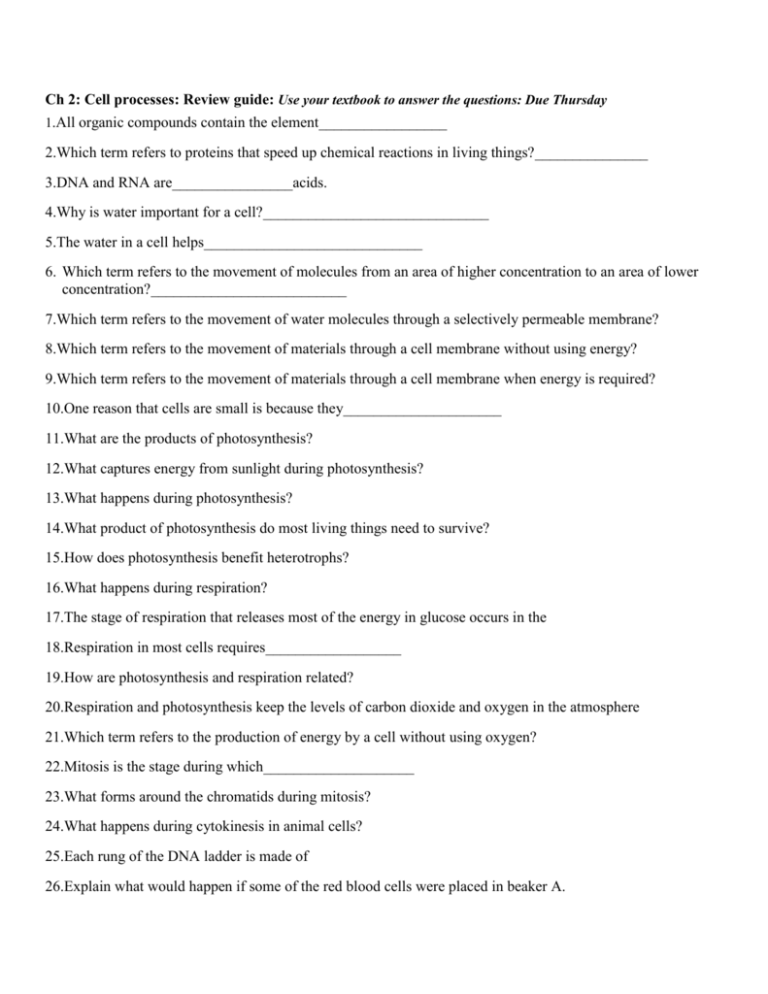
Ch 2: Cell processes: Review guide: Use your textbook to answer the questions: Due Thursday 1.All organic compounds contain the element_________________ 2.Which term refers to proteins that speed up chemical reactions in living things?_______________ 3.DNA and RNA are________________acids. 4.Why is water important for a cell?______________________________ 5.The water in a cell helps_____________________________ 6. Which term refers to the movement of molecules from an area of higher concentration to an area of lower concentration?__________________________ 7.Which term refers to the movement of water molecules through a selectively permeable membrane? 8.Which term refers to the movement of materials through a cell membrane without using energy? 9.Which term refers to the movement of materials through a cell membrane when energy is required? 10.One reason that cells are small is because they_____________________ 11.What are the products of photosynthesis? 12.What captures energy from sunlight during photosynthesis? 13.What happens during photosynthesis? 14.What product of photosynthesis do most living things need to survive? 15.How does photosynthesis benefit heterotrophs? 16.What happens during respiration? 17.The stage of respiration that releases most of the energy in glucose occurs in the 18.Respiration in most cells requires__________________ 19.How are photosynthesis and respiration related? 20.Respiration and photosynthesis keep the levels of carbon dioxide and oxygen in the atmosphere 21.Which term refers to the production of energy by a cell without using oxygen? 22.Mitosis is the stage during which____________________ 23.What forms around the chromatids during mitosis? 24.What happens during cytokinesis in animal cells? 25.Each rung of the DNA ladder is made of 26.Explain what would happen if some of the red blood cells were placed in beaker A. 27.Explain what would happen if some of the red blood cells were placed in beaker B. 28.Plasma is the liquid part of blood in which blood cells move. Explain what would happen if some of the red blood cells were placed in beaker C. 29. Identify the stages of the cell cycle represented by drawings 1-5. 30. Which drawings represent parts of mitosis? 31. List drawings 1-5 in their correct order, beginning with the drawing that represents interphase. 32. Identify structure A and describe its function. 33. Identify the structures labeled B. What do these structures contain? 34. Briefly explain what happens in each of the two stages of respiration. State the end products and where the stages occur in the cell. 35. Define DNA replication and explain its function.

